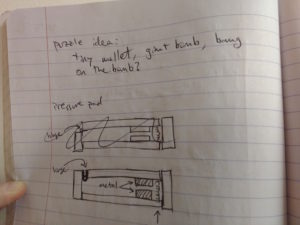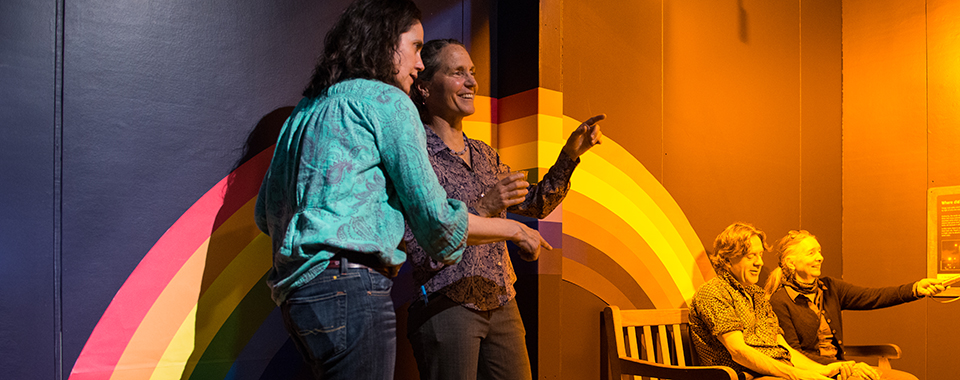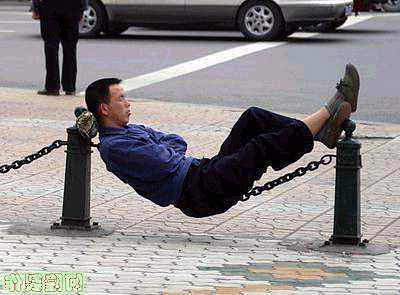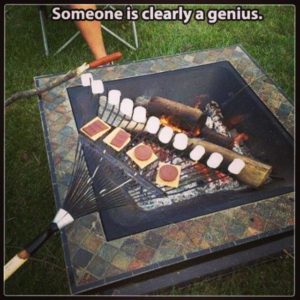Behind the Scenes, Part 2: Puzzles Puzzles Puzzles
Ever wondered how we design our games? This is the second post in a blog series about how we approach the challenge.
The “escape room” genre has quickly moved beyond the “escape” trope. In fact, many owners (myself included) find the “industry” name limiting — our games aren’t necessarily comprised of just one room, and your team’s ultimate goal (for example, in our Gallery game) is not necessarily to escape. For better or worse, “escape room” is the term that’s stuck, but it’s not really what distinguishes this genre of entertainment from, say, a haunted house or other immersive theatre.
So what does distinguish an “escape room” from any other immersive, live-action, team-based game? Challenges! We tend to refer to our challenges simply as “puzzles,” because most of them (even “dexterity puzzles”) involve some significant mental effort. (As much as we’d like to include Boda Borg style rock climbing, tunnel crawling, rope swinging, etc., the liability and hardware requirements are just not the cans of worms we want to open right now. 2018, though? Stay tuned.)

We often get the question, “How do you come up with your puzzles?”
The first step is brainstorming. This is an ongoing process:
Whenever anyone on our team thinks of a new puzzle, we jot it down somewhere — Max uses a notebook, Tara saves things on her phone, I use a completely nonsensical and inconsistent mix of notebook + Google Drive + Word docs, etc. We draw inspiration from lots of different places: video games, movies, random things on Pinterest, and yes, even science.

The second step is integration. Once we’ve come up with a scenario and a rough storyline (see last week’s blog post), we can start to pool our collective puzzle catalogues and figure out whether/how they fit the overall design/narrative of our game. Sometimes, quite frankly, a puzzle just doesn’t fit, but we like it so much that we use it anyway. We’re moving away from completely out-of-theme puzzles wherever possible, but as I mentioned in my last post, our philosophy is that “puzzles are primary” (after all, puzzles are what makes an escape room unique!), so we’re still willing to sacrifice some amount of believability at the altar of a really fun puzzle or mechanic.
Here are a few questions that we ask ourselves about integration:
- Does this puzzle fit within the theme? (How plausible are its materials, technology, and “dressing” given the scenario around it?)
- Do the players know why they are solving this puzzle? (Does it clearly help them advance toward their goal, or are they just solving it because it’s there?)
- How is the puzzle distinguishable from the game’s “flavor” or set dressing?
[Warning: Major digression ahead. To skip it, click here.]
This last question is something we’ve always struggled to answer. Should everything that’s a puzzle be labeled “THIS IS A PUZZLE”? (Or should everything that’s not be clearly labeled “THIS IS JUST FLAVOR”?) I think there are two major schools of thought on this question, each with its own internal logic.
A) Puzzles are clearly distinguished from flavor.
- Necessary conditions: Clear “labeling.” At lots of escape rooms, this is achieved by 1) making puzzles “stand out” in some way [incongruity with the rest of the set, a string of letters/numbers that fit a “combination,” a missing piece that clearly needs to be filled, etc.], and/or 2) putting actual labels on non-puzzles — e.g., “staff use only”.
- Advantages: Less confusion; more focus; team is never at a loss for what to work on.
- Disadvantages: Requires a lower level of observation; sacrifices some immersion in the “split” between background (flavor) to foreground (puzzles); limits creativity by narrowing focus to a clearly defined subset of items/interactions.
B) Puzzles are not readily distinguishable from flavor.
- Necessary conditions: Limited set of objects for players to interact with; flavor is made to be intrinsically interesting and extra robust; a reasonable mechanism, logic, or intuition exists for players to eventually discern what they should focus on.
- Advantages: Puts the entire space “in play”; better integration of puzzles into the set; forces players to explore and critically examine their entire environment; hidden/disguised objects and spaces become fair game; the question of, “What is worthwhile to pursue?” itself becomes a way to challenge the team.
- Disadvantages: More rules required (e.g., “don’t rip up the floorboards”); higher risk of players damaging technology or props that weren’t meant to withstand force; players may more easily find themselves frustrated or at a loss for what to do next.
There are plenty of great designers who go with “A” — for example, video game designer Jonathan Blow, creator of The Witness, said in a 2010 interview recently re-posted by RoomEscapeArtist that “adventure games” should be moving toward a more streamlined future where there’s absolute clarity about what is (and is not) a puzzle and which items are in play.
If you’ve played some or all of our games, you’ve probably noticed that we’ve answered this question in a slightly different way in each game. My personal sympathies lie on the “B” side of the spectrum — I’ve always felt that one of the most beautiful things about escape games are their ability to encourage creative problem solving, and I think that people are at their most creative when everything is in play. I love puzzles that encourage people to break free from functional fixedness (the psychological phenomenon of failing to recognize alternative uses for tools or other items).

When we’re able to accurately pose a problem and creatively cast about for tools at hand that might help us solve it (the “MacGyver” approach), we can come up with some really beautiful solutions:

And we want to encourage thinking outside of the box! As such, rules and “staff only” stickers are our enemies, though I have to admit that we use 3 of each in our venue. The rules aren’t going away, but I’m aiming for a future in which the stickers will. In moving into our new venue, we’ve already successfully gotten rid of all “red tape,” which we used to use quite liberally to mean, “don’t mess with this.”
That said, we want our games to be accessible to the public, and based on the many games I’ve observed, the majority of players prefer to be led to a concrete, approachable challenge; sometimes, entire teams can lose energy or become frustrated very quickly when that’s not the case. This has always been true for older players and first-time escape artists; but more and more these days I’m seeing some worrying evidence of an inverse relationship between escape room experience and creativity as well. Sometimes, people who have played several escape games (especially if they weren’t ours) come in expecting challenges to be presented to them in a certain way; and when they encounter unanticipated types of challenges presented in unanticipated formats, those players become frustrated, especially if they self-identify as “good at escape rooms.” This makes me very sad; to the extent that this trend does exist, I see it as a complete failure of the industry to harness the unique strengths that escape rooms can bring to the world of experiential entertainment.
But as much as we at Escape New Haven try to emphasize that there are only three rules, people tend to create their own rules for themselves. One of my favorite puzzles from The Workshop (the very first game we designed) involved a voice recorder sitting on a ledge near the bottom of the opposite side of a door into a locked room. There was a hole cut into the door at head height, and a gap underneath the door large enough for a voice recorder. Here’s what had to happen for a team to obtain the recorder, which contained an important clue:
- Look through the door into the next room
- Poke your head through the door and look down (to identify the voice recorder)
- Identify that the voice recorder was important/relevant
- Bang once, firmly, on the door (to jostle the recorder off its perch onto the floor)
- Use a slim wooden stick (or your fingers, if you were really lucky with the banging step) to slide the recorder under the door into your room so that you can listen to it.
#3 was the only step that didn’t really lose anyone. We lost a shocking 25% of our teams at Step #1 (self-made rule: “I don’t have the key to the next room yet, so nothing in the next room is relevant to me right now”); another 25% at Step #2 (“rule” #2: “I don’t have to change my perspective”); and another 40% at Step #4 (“rule” #3: “This object is a ‘next room’ object; I’ll get it when I get into the next room”). Steps #4 and #5 went hand in hand; the meager 10% of teams who actually realized that they could obtain the recorder usually figured them out together and accomplished the task.
I’ve struggled with the question of whether we should ever attempt that kind of puzzle again. There’s a tension between what many of our players want (i.e., to be made “to feel smart,” as articulated by a comment in response to an article by Nate Martin, who lumps MacGyver style puzzles in with the “tasks” category and disdains them both), and what designers like Jonathan Blow want (i.e., to actually encourage people to become smarter, or at least more creative). I definitely don’t want tasks to drag on (I’ll talk about that in a minute), and I absolutely see myself as in the business of creating the most fun experience I can for a wide audience, but I’m also not here to lead people around by the nose.
To mediate these tensions, we’re going to be putting a lot of thought into two aspects of our upcoming game:
- “Ramp-up”: presenting only the clearest puzzles at first, and saving the most abstract or challenging puzzles for last. Puzzle difficulty will still vary semi-randomly as the game moves along, but less experienced teams will receive more in the way of “onboarding” and more experienced teams who blow through the initial stages will have plenty of “meat” to chew on at the end. We’re also considering “extra points” or “side quests” to allow the very quickest teams to set a solid escape time without feeling cheated out of challenging content.
- “Goal clarity”: making sure that players know what they need to do, but leaving the entire world open and allowing them to determine how on their own. If we do this right, I’m hoping that we can find a “third way” between Options A and B in the “puzzles vs. flavor” dichotomy I discussed above.
We’ll use these techniques to augment our tried-and-true strategy of “design like a devil, clue like an angel” (I just made that phrase up, but I think it pretty much sums up how we do things), because it’s infinitely more feasible for us to make things easier for players on the fly than for us to make things harder, and our operators are very good at responding when teams are starting to get frustrated or no longer having fun.
Phew. That was quite a digression, but now we’re finally on to our third step: workshopping. There are several criteria that each puzzle needs to meet in order for it to pass muster, and at some point or another we all have ideas that we really like but struggle to turn into a workable puzzle. That’s where it helps to have a smart, creative team to bounce ideas off of, and a set of questions to answer about every puzzle:
- Is the puzzle hands-on? Not every puzzle needs to be, but the tactile/kinetic factor is one of the major advantages of real-life escape room over a virtual game of a similar nature, and we want to make the most of it. This is also why, when I peruse the escape room owners’ facebook groups and hear people claim that their games only require a “five-minute reset” time, I tend to look at them askance. A hands-on open world gets messy, and that should be okay.
- Is the puzzle in-theme? I discussed this earlier, but basically, our standards have risen to require at least a “7 out of 10” answer for most puzzles. If we come up with something amazing that doesn’t quite make that standard, though, we’ll probably put it in anyway, and you’ll probably love it.
- Is the solution controversial? It shouldn’t be. When someone shows you the solution to a puzzle you’ve been unable to solve, your reaction can be, “I never would have gotten that” (this happens to me a lot with visual puzzles); it shouldn’t be, “I don’t see how anyone would ever have arrived at that answer.” If there are several equally reasonable intuitions or interpretations of the clues, or no reasonable intuitions that can be gleaned from the clues, then something is probably wrong with the prompt — a guessing game is not a puzzle.
- Does the puzzle encourage (or force) teamwork and communication? One of the wonderful things about an escape room — and one of the reasons we get so many clubs, societies, and corporate groups who book our venue as a team-building activity — is the team communication aspect. The majority of our puzzles can be solved “solo,” but we try to make sure that there are at least a handful in each game that cannot.
- Is this a puzzle, a task, or a hunt-and-find? There should be a good mix of all three. The line between puzzles and tasks is sometimes blurry, but essentially a “task” is something that you basically know how to do (like putting together a jigsaw puzzle) and a “puzzle” is something that requires a moment of epiphany. I used to err on the side of minimizing tasks (with the exception of “dexterity puzzles,” which are at least partially task-based but are also, I believe, very well suited to escape rooms). However, something I learned from playing the Great Houdini Escape Room in San Francisco (often cited as one of the best escape rooms in the country) this winter is that tasks, when carefully interspersed with puzzles, can be a ton of fun, especially when there’s a slight learning curve to them.
- How is this puzzle different from the others? This is important in both an overall sense (we definitely don’t want return players to find our games repetitive) and an intra-game sense. One of the things I think that Escape New Haven has always done better than just about anyone is our intentional creation of a “suite” of puzzles that appeal to many different types of thinkers and challenge all of the senses. (Except taste. Please don’t put our puzzles in your mouth.) Everyone has their own strengths and their own blind spots, and a well designed escape game should give everyone a chance to shine. As our staff has grown (and with it our perspective), we’ve gotten even better at this.
- Is this puzzle feasible? Often, a puzzle is proposed in a way that’s not exactly feasible — no, we can’t train a unicorn to trot in and whisper the password into your ear, and no, we don’t have ten thousand dollars to spend on every new puzzle. There’s usually a way to massage the initial idea into something feasible (thank god for our engineers), but sometimes there isn’t, and sometimes the delight of the puzzle itself just isn’t worth the cost or the effort, so we also have to know when to table an idea or just let it go.
- Is this puzzle technically sound? It needs to be extremely robust (people can be vicious), extremely reliable, and relatively easy to “reset” back to its original condition.
If, after workshopping, a puzzle passes all of those tests (or we make an exception for it because we like it so much), then it will be included in the game!
Our fourth and last (design) step is to figure out the puzzle’s outputs. The “input” is the essence of the puzzle (what does the player have to do to “solve” it); the “output” is what the player gets out of it. Unless the puzzle is clearly for “extra points” only, the only satisfying outcome is for the game to progress in some way — a lock opens, a piece of information is revealed, an item is obtained, etc. In any case, the output should also be accompanied by some sort of feedback which, at bare minimum, tells the player that the puzzle has indeed been solved correctly. (I recently played an escape room where the interior design was beautiful but the puzzles were somewhat confounding: some puzzles failed to provide feedback when they were solved, and others failed to output anything at all. This will never be the case at our venue, unless we’re setting you up for a future “a-ha!” moment.) In some cases, for more complicated puzzles, we even provide feedback for various pieces of each puzzle — the Space Station is a great example.
Ultimately, each puzzle’s inputs and outputs will be massaged into a nonlinear “web”… and then of course we have to fabricate the puzzle… but those are topics for future posts.
Stay tuned…
– Ethan and the rest of the Escape New Haven team
P.S. Max and I spent all of last week at Escape Rhode Island, our Escape Industries sister company in Providence, working gloriously productive 16-hour days on the build of their newest game, “The Bunker.” We like it a lot. If you’re ever in the area, be sure to check them out!
